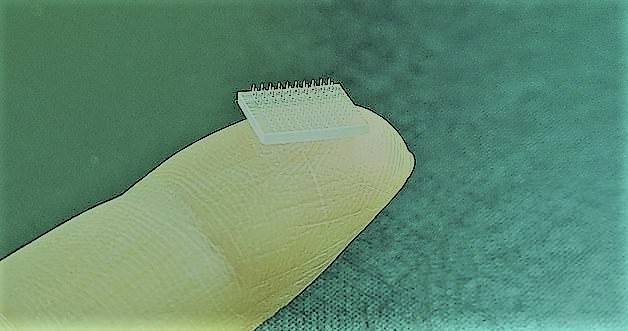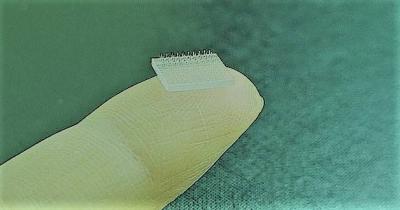Scientists have developed a fine 3D-printed patch that offers a pain-free alternative to needles, thus facilitating the process of administering the Covid vaccine. During experiments conducted on mice, the patch produced an immune response ten times greater, and a stronger response from T-cells and antibodies specific to the antigen, by a factor of 50, compared to a regular needle. This polymer patch requires smaller doses and can be mailed to homes for self-administration, eliminating the need for trained medical teams.
According to the Daily Mail, this patch provides a "worry-free" vaccination option for individuals who suffer from needle phobia, known as trypanophobia, which prevents some people from receiving Covid vaccines. Researchers have not yet conducted any clinical trials using the patch on humans, which could pave the way for a new method of administering vaccines in the future. The patch's development is credited to researchers from Stanford University and the University of North Carolina.
The patch utilizes 3D printing to create a three-dimensional design, which is then printed using robotic equipment. The robotic arms have a nozzle at the end that emits the printing material – in this case, the polymer – layer by layer. Thanks to the flexibility of 3D printing, microneedles can be easily customized to develop vaccine patches against various vaccines, including those for influenza, measles, hepatitis, or Covid-19.
While vaccines are typically given as subcutaneous injections, there is growing interest in what is known as intradermal injection, which occurs between the epidermis and the dermis. Researchers noted that intradermal injections are suitable for vaccinations because human skin is rich in immune cells.
The current coronavirus pandemic serves as a stark reminder of the differences that timely vaccination can make, according to researchers. However, obtaining a vaccine typically requires a visit to a clinic, hospital, or vaccination center, where a healthcare provider retrieves the vaccine from a refrigerator, fills a syringe with the liquid vaccine formulation, and injects it into the arm. Although this process seems simple, various issues can hinder mass vaccination efforts, from the cold storage of vaccines to the need for trained professionals to administer them. In contrast, the vaccine patch can be shipped anywhere in the world without special handling, allowing individuals to apply the patch themselves, similar to home Covid testing.




